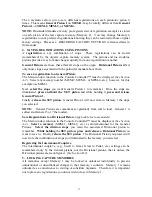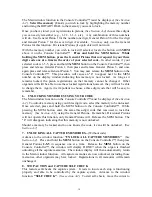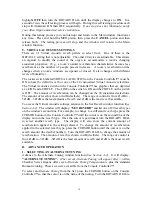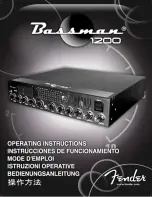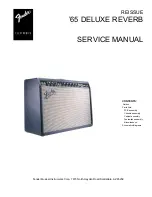
4
Following is a discussion of individual ranks of the organ.
‘D’
Trumpet
Very imitative trumpet stop found on the style ‘D’
Wurlitzer theatre pipe organ.
Open Diapason
Foundation stop that adds fullness to ensemble. The 16’
stop is usually called “Diaphone” because bottom octave of
the 16’ is a metal Diaphone sound. This lends power and
good pitch sense to the pedal.
Tibia Clausa
The “foundation” rank of the theatre organ. This rank,
coupled with its distinctive tremulant, is one of the main
ingredients of a theatre organ.
Clarinet
Imitative solo reed can also be used as an ensemble stop.
Violins II
Two string tones slightly detuned from each other that
create a shimmering quality in the sound.
Orchestral Oboe
Solo reed with a pungent nasal timbre somewhat imitative
of its orchestral counterpart.
Vox Humana
Voice originally intended to imitate the human singing
voice but really sound more like a goat! Used with the
Tibia Clausa for the traditional theatre organ sound.
Concert Flute
Typical wood open flute of the 1920’s, and used for
accompaniment.
Chimes, Glockenspiel,
Chrysoglott, and the Cymbal Imitative of their orchestral counterparts.
II. TREMULANTS
Your Protégé theatre organ has the most advanced authentic sounding tremulant system
available. In addition to digitally sampling individual ranks without tremulant, Allen also
samples individual ranks with tremulants on. When more than one rank is on the same
tremulant system in a pipe organ, the tremulant sound from the playing the pipes is not
identical from rank to rank. Each rank “reacts” to the varying supply of wind (tremulant)
differently. Similarly, Allen sampled each rank of the organ with tremulant “on” to
reproduce the authentic tremulant sound you hear. Even stops that are “ganged” together
on one tremulant stop or tremulant motor will have a different tremulant sound. This
Sampled Waveform Tremulant™ technology contributes to the huge ensemble sound of
the organ.
III. EXPRESSION PEDAL
The Protégé Theatre Organ has one general expression pedal for the entire organ.
IV. CAPTURE COMBINATION ACTION
Your organ is equipped with an Allen multi-memory capture action, which offers the
ultimate in registration control and convenience. The organist can set combinations on
any memory and then lock the memory (except memory 1 that cannot be locked). This

















